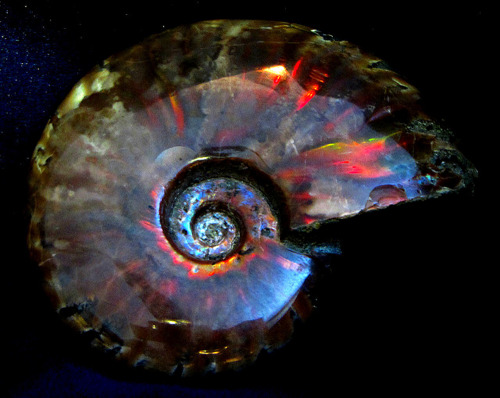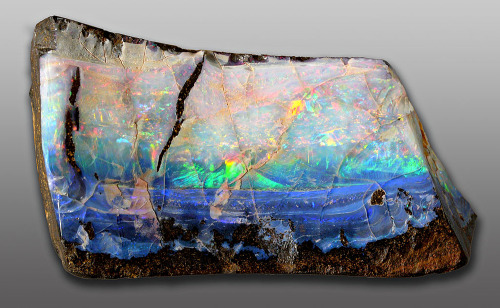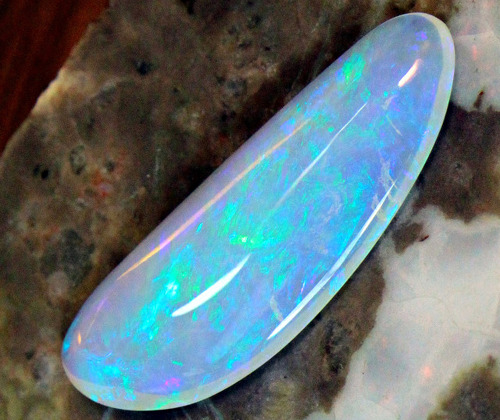stellar-indulgence:Opalized FossilsThese are no ordinary fossils (if there is such a thing): these i
stellar-indulgence:Opalized FossilsThese are no ordinary fossils (if there is such a thing): these incredible relics are made of solid opal, sometimes with rainbows of shimmering color. Australia is the only place on Earth where opalized animal fossils are found. These fossils are of global scientific interest and are among the most beautiful and valuable in the world. How do opalized fossils form?Opal forms in cavities within rocks. If a cavity has formed because a bone, shell or pine cone was buried in the sand or clay that later became the rock, and conditions are right for opal formation, then the opal forms a fossil replica of the original object that was buried. We get opalized fossils of two kinds:i. Internal details not preserved: Opal starts as a solution of silica in water. If the silica solution fills an empty space left by a shell, bone etc that has rotted away - like jelly poured into a mould - it may harden to form an opalized cast of the original object. Most opalized shell fossils are ‘jelly mould’ fossils - the outside shape is beautifully preserved, but the opal inside doesn’t record any of the creature’s internal structure.ii. Internal details preserved: If the buried organic material hasn’t rotted away and a silica solution soaks into it, when the silica hardens it may form an opal replica of the internal structure of the object. This happens sometimes with wood or bone.Images in this order: Opalized Dinosaur tooth, Ammonite,Shell x2, Dinosaur bone, Wood, Pineapple, Mussel shell, Belemnite. Click on each to view in more detail. -- source link
Tumblr Blog : fromstarstocells-deactivated201.tumblr.com
#fossils#opals#geology#palaeontology#science








